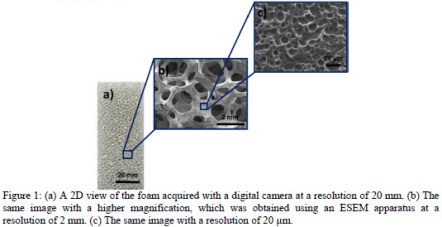Ask for a reprint
email :
* Give your email
2012
ACLN
|
B.Rousseau, J.Y.Rolland, P.Echegut, E.Brun, J.Vicente, 'Numerical prediction of the radiative behavior of metallic foams from the microscopic to macroscopic scale', Journal of Physics Conference Series 369 012003 1-10 (2012) doi:10.1088/1742-6596/369/1/012003
A parallel C++ numerical code was implemented to quickly and accurately calculate the radiative properties (reflectance and transmittance) of metallic foams that had scattering domains (pores, struts) with mean sizes larger than the wavelengths associated with thermal radiation. For application, the code required experimental knowledge of the material characteristics on several length scales ranging from the microscopic (approximately one micrometer) to macroscopic (approximately one centimeter). In particular, the 3D voxelized image of the investigated material was used, which was previously acquired using x-ray μ-tomography. The radiative properties were obtained by tracking a large number of rays within the numerical medium. On the local scale, rays interacted directly with the fluid/solid interface, which was obtained prior to the calculation by the application of a robust marching cubes algorithm to the entire set of voxels. The code was applied to aluminum foam samples, for which the experimental radiative properties were previously measured at room temperature with a customized instrument based on an infrared spectrometer. The code performance is discussed and the results enabled determination of the effects caused by the fluid/solid interface on the interfacial reflection.
|

|